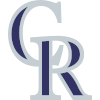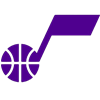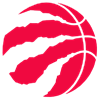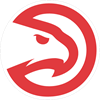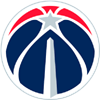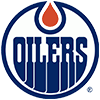Yahoo! launched its NFL Best Ball product shortly before the NFL Draft, but now that the draft is done the rookies have been added to the player pool. Since we're free to grapple with the expanded player pool, let's take a look at how we might want to build our rosters in the Yahoo! system.
The scoring and roster setup are basically a hybrid of BestBall10s, which feature defenses and PPR scoring, and the old DRAFT setup, which had 0.5PPR scoring and no defenses. Yahoo! best ball features defenses but with 0.5PPR scoring. Because defenses are included, the draft is 20 rounds like BB10s rather than the 18-round DRAFT system used without defenses.
I'll go through the position groups and, based on the general ADP, suggest what approaches might work best.
QUARTERBACK
Based on the current Yahoo! ADP, it seems safe to say that quarterbacks go more expensively here than on the other sites to this point. That's the case across the board – top quarterbacks like Lamar Jackson (13.9) and Patrick Mahomes (17.2) go at elevated prices, same as mediocre quarterbacks like Aaron Rodgers (63.6) and Drew Brees (71.4). These numbers strike me as unsustainably high and if you join Yahoo! Best Ball drafts in the future I would plan on the quarterbacks sliding further in the order, perhaps drastically. The current markets are plainly too expensive at QB and defense (more on that later) to last for long. If you're talking Jackson in the late second round or Mahomes toward the end of the third, then we're taking business seriously again. If the prices truly stick with the trends of the early ADP, then fading quarterback is almost mandatory. But again, I don't expect this to last as more, sharper players sign up for drafts.
If we assume quarterback markets more similar to other sites, then based on the drafts I've done so far your strategic approach might be somewhat dictated by your draft slot. For instance, Jackson's post-draft ADP on BB10s is 23.87, making his price coincide with the second round selection for teams with picks in the top four slots. Despite the high price, I think it makes sense to take Jackson in that range if you otherwise pick at least one running back with your first three selections. Jackson's point totals, even with presumed regression, pose a potential exception to the general recent rule of taking quarterbacks late, and receiver is otherwise deeper than running back. Indeed, one of my favorite ways to begin a draft is to take one of Christian McCaffrey, Saquon Barkley, Ezekiel Elliott, or Alvin Kamara in the first round before taking Jackson in the second, pretty much any market-rate wide receiver in the third, Mark Andrews in the fourth, and then another market-rate receiver in the fifth. If I can go McCaffrey-Jackson-Beckham-Andrews-Woods then in that scenario I don't mind paying up for the QB1.
If I don't have one of the first four draft slots then I'm probably not looking for Jackson. If I have a pick from slots 10 to 12, though, I might be in the market for Mahomes, who I'd ideally stack with Tyreek Hill if I select Hill in the late first. Mahomes' post-draft ADP on BB10s is 33.6, so he's no guarantee to make it to your third-round pick from the 10th or even ninth slot, but this might be the ideal application of Mahomes all the same.
After Jackson and Mahomes I'd say there remain four above average fantasy starting candidates at quarterback, divided into two tiers of two. The higher tier consists of Dak Prescott (72.34 BB10 ADP) and then Kyler Murray (67.96), with the lower tier holding Deshaun Watson (78.62) and Russell Wilson (81.44). If you don't end up with one of these guys then I'd probably give more consideration to taking a three-quarterback approach, maybe taking two in the tier of Matthew Stafford, Jared Goff, Baker Mayfield, Daniel Jones, and Joe Burrow before adding a Philip Rivers, Sam Darnold, or Gardner Minshew type as a QB3.
RUNNING BACK
The draft shook up the running back markets thanks to Clyde Edwards-Helaire (Kansas City), D'Andre Swift (Detroit), Jonathan Taylor (Indianapolis), JK Dobbins (Baltimore), Cam Akers (Rams), A.J. Dillon (Green Bay), Ke'Shawn Vaughn (Tampa Bay), and Zack Moss (Buffalo) all posing credible competitive threats to backfields that were previously somewhat established. In descending order of pre-draft BB10 ADP, the runners most affected are Aaron Jones (10.18), Devin Singletary (27.61), Mark Ingram (41.31), Marlon Mack (43.42), Damien Williams (47.85), Kerryon Johnson (57.16), Ronald Jones (87.42), and Darrell Henderson (89.58). Meanwhile, for reasons unrelated to the draft, clouds have gathered over Leonard Fournette in Jacksonville, which threatens to destabilize the ADP of a player who was going 23.35 prior to April 23.
If we can expect Yahoo's ADP to resemble those on other sites in the upcoming days, then we might expect a few things to happen to the ADP ahead.
First, Aaron Jones should fall from the late first round to the early or mid second round, falling past the likes of Joe Mixon, Nick Chubb, and Derrick Henry and instead going around Austin Ekeler, Josh Jacobs, and Miles Sanders. Dillon (6-0, 247), a second-round pick out of Boston College, is almost 40 pounds heavier than Jones yet boasts a slightly faster 40-yard dash (4.53 seconds to 4.56). It doesn't take effort to see why Dillon is a threat to those 14 red-zone rushing touchdowns Jones totaled in 2019.
Edwards-Helaire, of course, was the first runner off the board and the lone running back in the first round with Kansas City's 32nd-overall selection, and the resulting hype has understandably taken an aggressive tone. Williams is a proven fit in the Chiefs offense and is much faster than Edwards-Helaire at about 15 pounds heavier, so I wouldn't just assume Williams will get out of the way. Williams does have durability issues, though, and Edwards-Helaire isn't a player to doubt, so CEH's upside is beyond dispute if Williams should get cast aside for whatever reason. Still, CEH's new price appears to be right round the turn of the second and third rounds, which strikes me as exceedingly high for a player who could conceivably start zero games this year. Williams' price tag should in any case fall from around the turns of the fourth and fifth rounds and land in the range of perhaps the sixth or seventh rounds.
Johnson's stock could free fall in Detroit, maybe all the way down toward the ninth round. The same should happen with Mack, whose chances of playing are more or less dependent on whether Taylor holds on to the ball. Unlike Swift and Taylor, Dobbins is unlikely to start in Baltimore and therefore shouldn't knock Ingram's stock much further than the fifth round or so. Akers, meanwhile, is as likely to start for the Rams as Swift is for the Lions or Taylor the Colts. Henderson's stock should fall in the process, maybe from the eighth round to the 12th or so.
Many in the fantasy media industry consider Vaughn the favorite to start in Tampa Bay over Jones, and the initial returns in BB10 ADP shows Vaughn at 74.03, ahead of Jones at 90.25. I'll fade Vaughn and cautiously make measured investments in Jones at those respective prices, but I could be wrong to do that. Jones is in his third NFL season yet is three months younger than Vaughn, so Vaughn's greatest selling point and Jones' greatest weakness – polish – is something that should both be a given yet doomed to diminishing returns as Jones continues to develop. Or so that's how I see it.
Moss went later in the draft than Vaughn, but I think Moss is clearly the better player. If someone agrees then they might find it slightly concerning for Singletary, but the early signs indicate an only marginal slide in the draft order, from roughly the early third round to maybe the turn of the third and fourth. Singletary and Moss might have to coexist if they both stay healthy – Frank Gore saw 179 touches last year, including 18 carries inside the 10-yard line versus Singletary's total of three. In other words, 10.8 percent of Gore's carries occurred inside the 10-yard line while Singletary, on 15 fewer carries, logged 2.0 percent of his carries inside the 10. Moss (5-9, 223) is more densely built than either of Gore or Singletary and is specifically renowned for his balance and tackle-breaking ability. Moss could be a legitimate touchdown vulture in the 10th or 11th round. I prefer Moss' price between the two.
I'll generally go with six running backs in a best ball draft, though I might go with five if I think I'm especially strong at running back and weak at receiver.
WIDE RECEIVER
The scarcity concerns at running back are real, but so is the depth at wide receiver. Without engaging the context-indifferent logic of Zero RB approaches, I think it's fair to say that more than most years, you can get more at receiver at or after the middle rounds. Depending on how the markets develop in the upcoming weeks, it might also be true to say that there are fewer mid-round running backs than most years. Particularly if Fournette falls out of the first three rounds due to his uncertain situation, you can expect an inflation pinch at the turn of the second and third rounds as owners reach for theoretical RB1 upside long after the most plausible RB1s are off the board. I'd argue you're already seeing that with Edwards-Helaire's placement toward the end of the second round.
Given this, as much as I still target wideouts like DeAndre Hopkins and Tyreek Hill in the late first round, I would prefer to have a suitable running back selection on the board in two of my first three picks. We'll see whether that remains feasible as the prices develop.
The glut of mid-round wide receiver options is glaring in any case – that there is both safety and upside in the middle-round wideout market should remain a given due to the league's ongoing shift toward a three-wide base offense. Even in cases where standout rookies like CeeDee Lamb and Jerry Jeudy pose new threats to Michael Gallup and Courtland Sutton, respectively, if the new price is reasonable then they remain actionable options all the same, even if they're going a bit later than they did pre-draft.
Granted, Yahoo! and their 0.5PPR scoring do raise the significance of touchdowns and decreases the utility of receptions. I just don't know whether it changes enough to dictate a change in strategy. I'd argue that it merely invites a slight change to the order in which you rank the receiver candidates. For instance, as much as I like the idea of getting Robert Woods in the fifth round, the fact that he's so reception-dependent would make me diversify my selections more than I would in plain PPR scoring. More specifically, I might look to temper my acquisitions of Woods and Keenan Allen types while granting greater consideration to better per-target touchdown bets like Kenny Golladay, Calvin Ridley, DK Metcalf, and Tyler Lockett.
Regardless of how you play the market at receiver, take time to seriously consider the possibility of making two- or three-player stacks of whatever passing games you invest in. It doesn't even need to be a good passing offense – when done correctly stacking brings a structural benefit because it simply helps corner a share of a passing game's weekly production. As long as the total acquisition cost is advantageous, then stacking is mostly a way to use your draft capital to guard yourself against week-to-week performance volatility, though it's also a potential way to limit injury impact. The most potent example of a stack is of course a Mahomes-Hill-Kelce arrangement or some such thing, but even a Funchess-Lazard or a Shenault-Conley sort of duo can provide utility as long as you get them at a favorable price.
I'll usually go with seven wide receivers in a draft, though there are arguments to make for as few as six or as many as eight in certain scenarios.
TIGHT END
That stacking logic at receiver can extend to tight end, where you might let a prior selection of Calvin Ridley break the tie for you when you're choosing between Hayden Hurst and Noah Fant in the 10th round. You won't want to stack multiple tight ends from the same team, however – getting Zach Ertz and Dallas Goedert, for instance, would probably do you no good.
Like quarterback, I generally let my draft slot decide my approach at tight end. I'd ideally get two solid starting options, but if I can't then I might need to audible to three tight ends of ambiguous starting quality. I don't consider the position high enough stakes to overpay for that two-TE ideal.
You might have picked up on it from the quarterback section, but my favorite expensive tight end of 2020 is Mark Andrews, who's close to my co-TE1 just behind Travis Kelce. Andrews is usually the fourth tight end off the board, though, and almost never soon than the third one selected. I project better numbers for Andrews than I do George Kittle, who is usually at least two rounds more expensive. Given my disagreement with the market on this question, I have to keep hammering for Andrews shares, especially when I get Lamar Jackson in the second round. It's worth keeping in mind, too, that Andrews offers unique touchdown upside among the tight ends, and the 0.5PPR scoring probably hurts PPR-centric tight ends like Ertz and Austin Hooper.
If I don't get Andrews, then my next most ideal target is probably Tyler Higbee, who showed top-three TE upside last year but might fall as far as the eighth round. If I don't get Andrews or Higbee, then my focus probably shifts to making the back-to-back selections of T.J. Hockenson and Hurst at some point in rounds 9 through 11. As much as Blake Jarwin's value took a hit with the first-round selection of CeeDee Lamb, it's probably Jarwin, Irv Smith, and Chris Herndon who headline the bleak remaining list of options for me. If you're looking for basement-level punt picks, then touchdown specialists like Kyle Rudolph and Darren Fells might suit your approach.
DEFENSE/SPECIAL TEAMS
Rather than going three quarterbacks, you might want to consider going with three defenses. It's easy to end up with dud totals at defense in any given week, but one way you can avoid bad totals, or maybe even reliably acquire high totals, is to help your odds with three defenses. Defenses go cheaper than quarterbacks, so particularly with a handful of this year's bargain quarterbacks at risk for struggles or arguably even benching – think Drew Lock, Gardner Minshew, Dwayne Haskins, Tyrod Taylor/Justin Hebert, Nick Foles/Mitchell Trubisky, Ryan Fitzpatrick/Tua Tagovailoa – it might be worth it to pay for two quality quarterbacks to ostensibly secure high scores at that position while using three of your last picks to take a swarm approach at defense.
Aside from the strategic considerations about your positional volumes, you'll need to identify your targets generally. We'll see where the market goes as Yahoo's product compiles more draft volume, but early on people are paying a lot for defenses, to the point that I think we can mostly ignore the ADP. The 49ers, for instance, are the first defense off the board with an ADP of 60.9. The eighth defense, the Chiefs, has an ADP of 91.8. This is gibberish, so I wouldn't plan for your draft based on those numbers. On other sites defenses generally start to go off the board in the 13th round, with the 12th defense usually going around the end of the 17th.
I of course could be wrong, but I happen to really like a few defensive options that typically go 10th or later among defenses. Therefore, going with a cheap three at defense strikes me as especially interesting for this year. My favorites are Tampa Bay, Denver, and Washington.
Tampa was already on a great trajectory thanks to its elite run defense and standout trio of prospects at corner, then they added Antoine Winfield Jr. at safety. Denver gets Bradley Chubb back in time for what will hopefully be a bounce-back season for Von Miller, which is easy enough to imagine if defensive line additions like Jurrell Casey and McTelvin Agim put more pressure on the pocket. Washington's defense has questions at corner and might deal with the weight of a slacking offense, but their pass rush might be the league's best with all of Chase Young, Montez Sweat, Ryan Kerrigan, Jonathan Allen, Matthew Ioannidis, and Daron Payne swarming the point of attack.
Of course, you're more likely to get what you pay for with more expensive defenses like the 49ers, Ravens, Steelers, and Patriots, but I might tend to commit to a two-defense approach rather than a three-defense team if I'm paying up for one of those costly squads.












